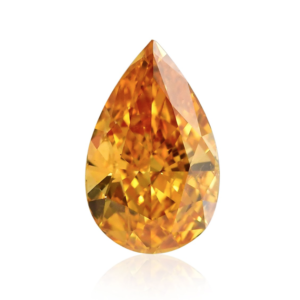Diamonds and the Rainbow
Some Industry Insight!
Diamonds exist in all sorts of shades and colours, from industrial grade diamonds to Pristine Flawless White Diamonds.
Yellow Diamonds
Bursting with sunshine hues, these gems often originate from South Africa and Australia. Their vivid color comes from tiny nitrogen atoms trapped within the diamond’s structure. (If you pop in store we’d be more than happy to show you our Yellow Diamond statement trilogy ring, with yellow diamonds originating from Australia’s now shut down Argyle diamond mine)
Here is our gorgeous yellow earth diamond and white centre lab diamond ring.
Pink Diamonds:
From delicate blushes to deep rose hues, pink diamonds are incredibly rare and highly sought-after. Australia is a primary source, where intense pressure and heat create their captivating color. The Argyle Mine, once responsible for 80% of the world’s pink diamonds, recently closed, making these stones even more precious. (once again pop into The Diamond Mine, to have a look at our impressive Pinks collection.)
Blue Diamonds: Imagine the captivating depths of the ocean captured in a stone. Blue diamonds, often sourced from South Africa and India, owe their color to trace amounts of boron. The Cursed Hope Diamond, a mesmerising 45.52-carat blue stone, is perhaps the most famous example.
Green Diamonds: Ranging from emerald green to olive tones, these rare gems originate mainly from Brazil and Venezuela. Their color comes from radiation, either natural or from exposure to radioactive elements.
Orange Diamonds: Found primarily in Africa, these stunning pieces are incredibly rare, and their color, derived from nitrogen, can sometimes fade over time, adding to their precious and delicate nature. Kind of like a limited-edition sunset you can wear.
Purple Diamonds: Forget amethyst, these gems bring the true royalty look to life. From lavender whispers to deep, almost grape-like purples, mainly found in Australia and Russia. The color comes from a unique combination of nitrogen and hydrogen, creating a truly mesmerising effect. Argyle violets are very difficult to find and to describe them as ‘incredibly rare’ is an understatement. For every 500 or more pink diamonds unearthed, only one would emerge as violet. And of all the violets discovered, less than five per cent are considered fully-saturated violets, and classified using the Argyle scale as BL3, the deepest colour classification. The 2.83-carat Argyle Violet featured in the 2016 Argyle Tender stands as the largest polished Violet by far. Over the life of the Argyle Diamond mine spanning nearly four decades, just nine Tender stones classified as Violet, Gray or Blue were one carat or larger in size, of which only two were over two carats, of which only The Argyle Violet received a Violet certificate from the Gemological Institute of America.
Brown Diamonds: Believe it or not, brown diamonds are actually the most common color of diamond found in nature! Around 15% of all mined diamonds have a brown hue. For many years, brown diamonds weren’t considered very valuable gemstones because of their color. However, clever marketing campaigns, particularly in Australia, have given them new nicknames like “chocolate diamonds” and “cognac diamonds,” making them more desirable, and either way, their colour is absolutely gorgeous when paired with sparkling white to make their rich colour pop. Brown diamonds complement every skintone, and are a more affordable option, whilst still keeping the legendary diamond durability.The brown color in diamonds can come from different sources. Traces of nitrogen can give them a yellowish-brown tint, while structural patterns can create a deeper brown color. Interestingly, some brown diamonds can be transformed! Gemologists can use high-pressure, high-temperature treatments to alter the crystal lattice and change a brown diamond to a yellow or even colorless stone.
Black Diamonds: Talk about making a statement! These aren’t just “lack of color,” they’re a force of nature with deep, inky tones, mainly found in Brazil and the Central African Republic. Their color comes from a dense cluster of graphite inclusions, making them incredibly strong and scratch-resistant.
And now for the big finale, Red Diamonds.
So, what makes them so red? Unlike most coloured diamonds, the exact cause of red in these gems is still debated. Some believe it’s caused by tiny distortions in the diamond’s atomic structure, while others suggest microscopic inclusions of other minerals. Whatever the reason, the result is we can safely say that there is a little bit of magic involved. ✨
How rare are they? Like finding a needle in a haystack, blindfolded, underwater.
It’s estimated that less than 50 natural red diamonds larger than half a carat exist in the world! Each one is a unique treasure, with its own intensity and depth of color.
The most famous one however is the largest to be found, The Moussaieff Red. Originally 13.9 carats in its rough form, now after being cut, it sits at 5.11 carats of Fire.









